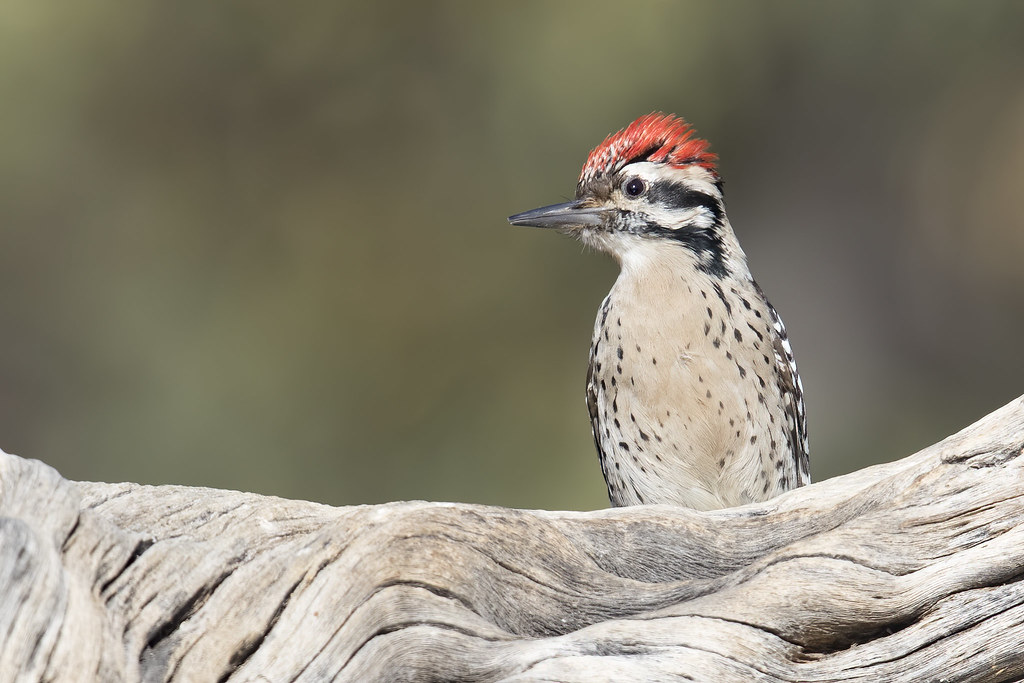The ladder-backed woodpecker, or Dryobates scalaris, is a fascinating bird species that calls Arizona home. This small yet bold woodpecker stands out with its barred black and white pattern, making it a favorite among birdwatchers and nature enthusiasts in the state.
Quick Facts
- The ladder-backed woodpecker measures around 6½ to 7½ inches (16.5 to 19 cm) in length.
- It displays a distinct black-and-white barred pattern on its back and wings.
- Males sport a vibrant red crown, absent in female adults.
- This species is listed as “Least Concern” on the IUCN Red List.
- It is often found nesting in cacti in arid regions.
Subspecies Information
The ladder-backed woodpecker belongs to the species Dryobates scalaris within the family Picidae. While there are no officially categorized subspecies within Arizona, variations in bill size and coloration can be noticed among populations, particularly when comparing northern and southern groups. Southern populations exhibit duskier buff breasts and smaller bills.
Physical Dimensions
This medium-sized woodpecker typically weighs between 22 and 32 grams. Its length ranges from 16.5 to 19 cm, and its wingspan reaches about 28 cm. These dimensions help it maneuver adeptly through its dry, brushy habitats.
Identification
The ladder-backed woodpecker boasts a unique barred pattern that resembles a ladder, hence its name. Adults present cream-colored underparts with black speckles on the breast and flanks. The male’s red crown is the most striking difference when distinguishing between genders. Immature males show a smaller red patch, while females lack it entirely. It’s similar to Nuttall’s woodpecker, yet has a more pronounced barred back and less black on its head.
Local Habitats
In Arizona, ladder-backed woodpeckers are predominantly found in areas abundant with dry brush and thickets. Common locations include:
- The Sonoran Desert
- Riparian woodlands
- Semi-arid regions with plenty of cacti
Natural Habitat
This species thrives in arid environments, favoring dry brushlands, deserts, and areas interspersed with large cacti. It is often seen in the lower deserts of Arizona, where it finds suitable nesting and foraging opportunities.
What They Eat
Ladder-backed woodpeckers feed on insects and their larvae, which they extract from tree bark using their chisel-like bills. They also consume fruit, particularly from cacti, making their diet quite diverse. In Arizona, they often forage on the saguaro and prickly pear cacti.
Migratory Behavior
The ladder-backed woodpecker is generally non-migratory, residing in the same areas year-round. However, slight altitudinal migrations might occur as they move to lower elevations during harsher weather conditions.
Conservation Status
Currently listed as “Least Concern” by the IUCN, the ladder-backed woodpecker faces few severe threats to its population. However, habitat loss due to urban development and agricultural expansion can pose risks. Preserving their natural habitats, such as desert thickets and riparian zones, remains crucial for their continued well-being.


